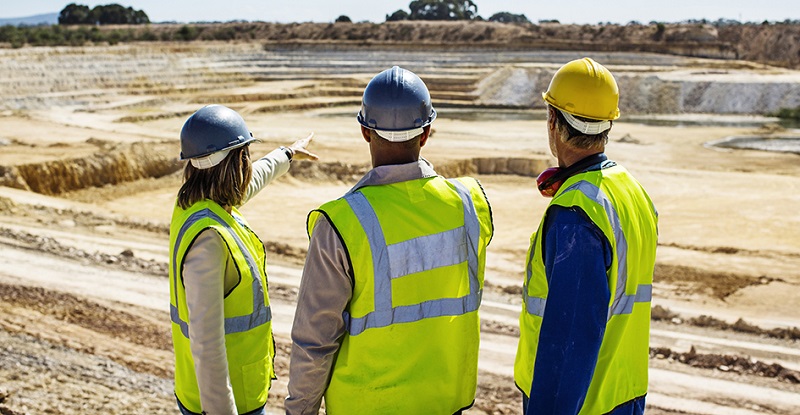
Listen to our podcast episode with this article's author, Aaron Aerts, and PwC's Mark Patterson and Dan O’ Brien. Part of our Coffee Chats with CPABC podcast series.
As we continue to navigate through these unprecedented times of uncertainty, achieving resilience and forging new opportunities is top of mind across industries. PwC’s 52nd BC Mining Report, “ESG: Resilience and opportunities in uncertain times”, highlights how BC’s mining industry, a long-term driver of the province’s economy, has continued to evolve and affect progressive change in issues such as health and safety, community engagement, and environmental impacts – topics that will only continue to rise in importance.
To better understand the importance of environmental, social, and governance (ESG) practices, we spoke with PwC’s Mark Patterson, CPA, CA, partner and BC mining leader, and Dan O’ Brien, western Canada leader for sustainable business solutions.
How did BC’s mining sector fare in 2019?
Mark: On the financial side, 2019 was a more challenging year for BC’s mining sector than 2018. The year started fairly strong, but prices slipped off in the latter half of the year. Despite the dip, the industry accounted for nearly 12,000 direct jobs across the province and contributed over $1 billion to government revenues.
The mining sector in BC is driven by two commodities in terms of production: metallurgical coal, which is about 50% of revenue, and copper which is about 20%. Both commodities saw price declines in the second half of the year. On the gold side, prices were up which drove higher revenues and higher earnings. We've seen these trends continue into 2020. Fortunately, the mining industry was in a relatively strong financial position going into the COVID-19 pandemic, allowing them to better weather these unprecedented times.
What does establishing ESG look like in the mining industry? How do we measure it?
Dan: BC’s mining companies are no stranger to ESG. They have been subject to regulatory requirements around managing environmental risks, along with health and safety, for many years. So in some ways, the mining sector is a leader in ESG.
On the environment side, it's about managing inputs and outputs. Thinking about use of energy, it’s both the use of water and emissions. On the social side, it's health and safety, but also compensation, diversity in the workforce and engagement with external stakeholders.
There has been a lot of engagement with Indigenous communities and with rural communities. Mining companies know that they have to work with all of their stakeholders to get social license for their projects to go ahead. We're starting to see elsewhere in the world this is being taken to potentially even a higher level, so I think there's still progress to be made here in BC.
And finally on the governance side, it's how the organization is managing the environment and social aspects within the organization. Are they setting targets that they're working towards? Is management or executive compensation tied to that performance? An interesting one that often gets overlooked is innovation. What is the company doing to innovate and position itself?
The report highlights how ESG is tied with financial performance and accessing capital. What are the advantages for public companies investing in ESG both before COVID-19 and going forward?
Mark: In 2019 there was a huge focus on climate change initiatives around the world, which brought a lot of attention to the topic. We've seen the E of the ESG being a big focus for companies, especially here in in British Columbia. So in terms of the regulatory framework, it has given us a strong foundation. But the key is starting to report out on that.
Investors are starting to pay more attention to metrics around environmental and social performance when making investment decisions. Some very high profile organizations have come out to say that ESG is going to be at the core of how they make their investment decisions.
As we start to think about what life is like post-pandemic, the expectation is that there is going to be a scarcity of capital. So people are going to have to make a choice as to where they choose to put their money. Having ESG metrics and reporting as a foundational element of how companies are evaluated is going to be another stepping stone to help companies attract attention and capital for their projects.
What advice do you have for an organization or a business looking to establish ESG practices?
Dan: Start by focussing on how ESG is going to create value for the company. Typically, the most successful strategies focused on ESG also create additional value for the company. We focus on three different areas where we think ESG initiatives lead to value creation:
- Consider access to capital: Investors are looking to see how companies are addressing ESG issues. They recognize companies that have a strong ESG ethos is a good proxy for a well-managed company, and points to a company that's resilient. We've seen evidence of that with companies with strong ESG practices tending to outperform their peers during the COVID-19 crisis in terms of financial performance.
- Align your business with what customers are looking for: In PwC’s 2019 CEO report, over 50% of CEOs see climate change as a driver for opportunities within their business, and that's particularly true in the mining sector. There's going to be demand for copper, there's going to be demand for steel, for metallurgical coal, for various other minerals and elements. But those materials are limited – so you will need to have traceability and information on how they're being produced. For example, large auto manufacturers would want to know the emission intensity of what they purchase, or if it is sourced from sustainably managed mines.
- Consider risks and opportunities: Can you avoid costs by mitigating and managing risks? Or can you look at other potential opportunities that may be emerging and how do you factor that into your corporate strategy and adjust?
Once you've identified what those opportunities are and how they can create value, then you can look at the cost-effectiveness. Where can you get the most bang for your buck in terms of these initiatives? And then it's just a matter of picking your way through and working down the list until you've made the progress that you want to make.
Learn more about PwC’s Mining Report and how ESG practices can build organizational resiliency by listening to our podcast episode with Mark and Dan.
Aaron Aerts is an economist for the Chartered Professional Accountants of BC (CPABC).



